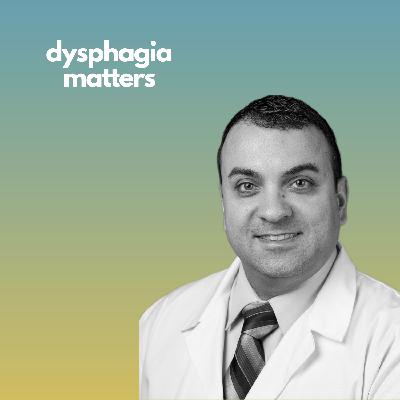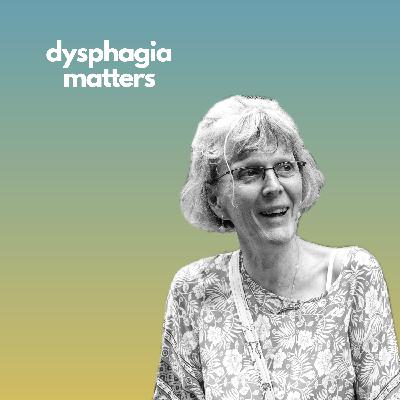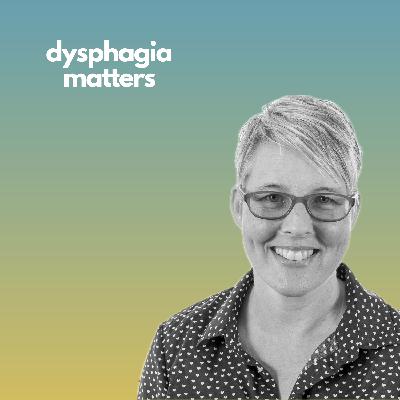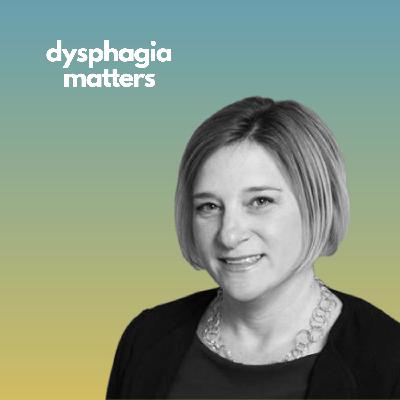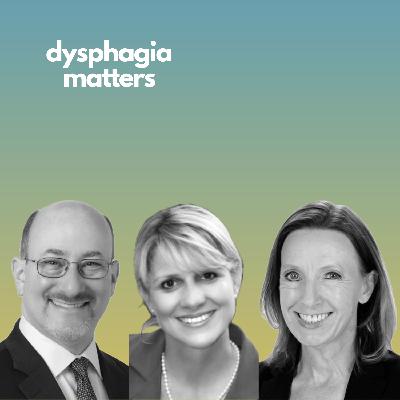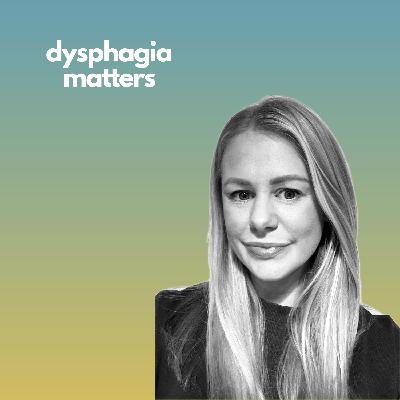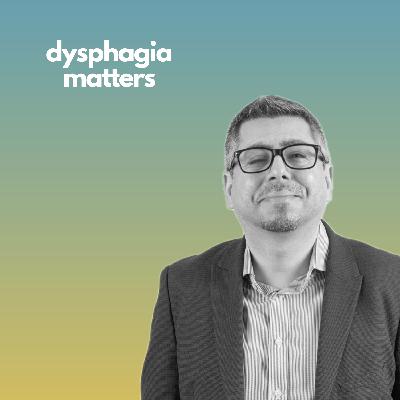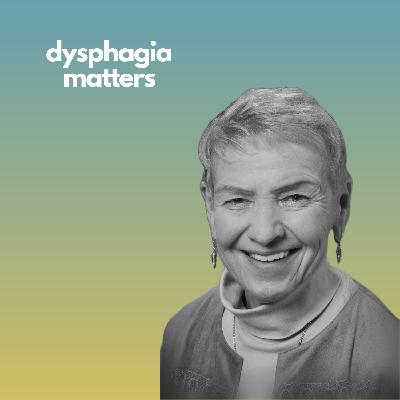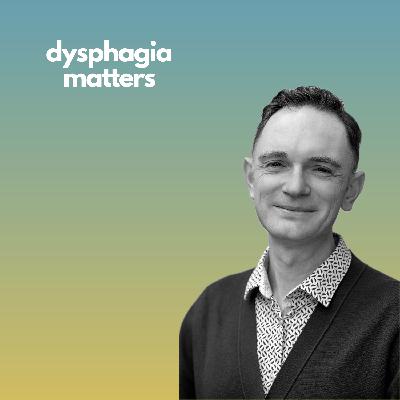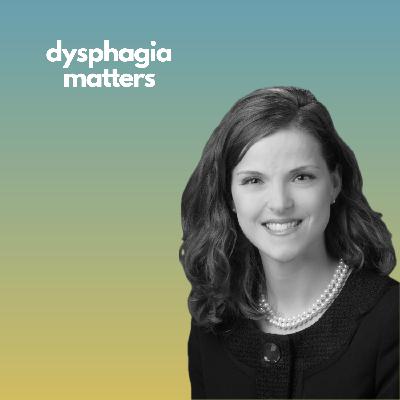Discover dysphagia matters
dysphagia matters

49 Episodes
Reverse
Behind the tremor in Parkinson’s disease lies a complex neurodegenerative process that affects far more than movement. In this conversation, we are joined by Prof. emer. Werner Poewe, neurologist and one of the world’s leading experts in Parkinson’s disease. He unpacks the evolving understanding of Parkinson’s disease, from James Parkinson’s first observations to today’s insights into pathology, prodromal symptoms, diagnosis, and treatment. With a special focus on swallowing and dysphagia, we explore what clinicians need to know to support individuals with Parkinson’s disease across all stages of the disease.
Button batteries may be small, but their impact can be devastating. In this episode, we speak with Prof. Kris Jatana about the serious and often hidden dangers of button battery ingestion in children. Found in everyday household items, these small batteries can cause severe injuries to the esophagus and surrounding structures within hours of ingestion.
Kris explains what button batteries are, how they cause injury when swallowed, and why quick recognition and management are critical. We discuss the challenges in diagnosing unwitnessed ingestions, the steps parents and caregivers should take in an emergency, and current strategies for acute and long-term management.
Helpful resources:
Global injury research collaborative (GIRC): www.globalirc.org
Sethia et al. (2021). Current management of button battery injuries. https://doi.org/10.1002/lio2.535
What is it like to live with dysphagia due to ineffective esophageal motility (IEM)? In this episode, Adrienne shares her personal journey: from first noticing symptoms, through the path to diagnosis, and how the condition has evolved over time.
We explore the deep impact of IEM on eating, drinking, social life, and quality of life. Adrienne talks about what it is like to have an invisible disease, the struggles of explaining the condition to family and friends, the treatments and strategies she has tried, what has helped, and what remains challenging.
To close, she offers thoughtful advice for others newly diagnosed with IEM, as well as important insights for healthcare professionals supporting people with this condition.
Literature that we talk about:
Kamboj et al. (2024). A practical approach to ineffective esophageal motility. https://doi.org/10.1111/nmo.14839
Schroeder et al. (2024). Ineffective Esophageal Motility: Current Criteria and Management. https://doi.org/10.1007/s11938-024-00466-0
Tuchman, J. (2022). Dysphagia Naturally: Tips, Tools, and Resources for Patients with Swallowing Disorders.
Prof. Taher Omari, Physiologist, Principal Research Fellow and lead of the Swallowing Research Group at Flinders University in Adelaide (Australia) joins us to share insights on the new Leuven Consensus. This research project sets out recommendations for pharyngeal and upper esophageal sphincter (UES) disorders using high-resolution manometry with impedance (P-HRM-I).
Taher explains:
the principles of P-HRM-I
how the consensus was developed
the diagnostic procedure when using P-HRM-I
what it means for advancing clinical practice and research in dysphagia
Literature that we talk about:
Omari et al. (2011). A Method to Objectively Assess Swallow Function in Adults With Suspected Aspiration. https://doi.org/10.1053/j.gastro.2011.02.051
Omari et al. (2025). Defining Pharyngeal and Upper Esophageal Sphincter Disorders on High‐Resolution Manometry‐Impedance: The Leuven Consensus. https://doi.org/10.1111/nmo.70042
In this episode, we’re joined by Prof. Kathryn Steadman, who gave an excellent presentation at last year’s European Society for Swallowing Disorders conference in Münster, Germany. Her talk explored the question: Does swallowing tablets with an IDDSI Level 4 gel impact drug absorption?
Because this topic isn’t discussed much – and Kathryn brings a lot of expertise as a pharmacist – we’re happy to have her with us to talk about safe and effective medication intake for people with dysphagia.
Topics we discuss:
the role of swallowing gels in medication administration
dysphagia as a potential side effect of medication
the pros and cons of crushing tablets or pills
what the future might hold for medication strategies in dysphagia care
Links & Literature:
Malouh et al. (2025). Does using oral medication lubricants to swallow whole or crushed tablets alter drug absorption in vivo? A randomised, single-dose crossover bioequivalence study in healthy adults. https://doi.org/10.1016/j.jddst.2024.106552
Don’t Rush to Crush – Advanced Pharmacy Australia
There are many rare diseases, where dysphagia can manifest. In this episode, we are joined by Dr. Bendix Labeit, neurology physician and clinical scientist at University Hospital Düsseldorf in Germany to talk about dysphagia in one of these rare diseases: myositis.
Together, we discuss:
What is myositis, and what are its different forms?
How does dysphagia manifest in people with myositis?
What does the diagnostic process look like, including an algorithm where dysphagia plays a key role?
What are the current treatment approaches for dysphagia in myositis?
Literature that we discuss:
Labeit et al. (2022). Detecting myositis as a cause of unexplained dysphagia: Proposal for a diagnostic algorithm. https://doi.org/10.1111/ene.15202
Labeit et al. (2020). The Impact of Dysphagia in Myositis: A Systematic Review and Meta-Analysis. https://doi.org/10.3390/jcm9072150
In this episode, we speak with Prof. Shaun Treweek about why so much health research still falls short. Shaun argues that big parts of health research is “bad” and does not bring the value to the evidence-base we need. As a leading expert in trials methodology he explains how we can change that and how we can conduct “good” research for our patients.
Other topics we cover
What leads to “bad” studies and eventually research waste
The gender health gap and what a Pink Floyd lyric has to do with it
Literature we discuss
Daly et al. (2025). Tolerating bad health research (part 2): still as many bad trials, but more good ones too. https://doi.org/10.1186/s13063-025-08747-4
De Paoli et al. (2022). Another Brick in the Wall … no More! Breaking the Sex Bias. https://doi.org/10.1016/j.clon.2022.09.052
Pirosca et al. (2022). Tolerating bad health research: The continuing scandal. https://doi.org/10.1186/s13063-022-06415-5
Rogus-Pulia et al. (2024). A Proposed Framework for Rigor and Transparency in Dysphagia Research: Prologue. https://doi.org/10.1044/2024_AJSLP-23-00368
Treweek et al. (2022). Getting it wrong most of the time? Comparing trialists’ choice of primary outcome with what patients and health professionals want. https://doi.org/10.1186/s13063-022-06348-z
Werden Abrams et al. (2024). Participant Characteristics for Dysphagia Research: A Proposed Checklist. https://doi.org/10.1044/2024_AJSLP-22-00183
FRONTIERS website www.frontiersframework.com
Curious about one of the gold standards in swallowing assessment? Join us for an insightful discussion about Flexible Endoscopic Evaluation of Swallowing (FEES) with our guest Prof. Heather Starmer. This episode offers valuable perspectives for both those new to FEES and those looking to enhance their current practice, as Heather shares practical knowledge gained from years in the field.
We explore the sometimes overlooked aspects of FEES preparation, consider how FEES and videofluoroscopy can complement each other rather than compete, and discuss common challenges in interpretation that many clinicians face. Heather also reflects on emerging developments that might shape dysphagia assessment in the coming years. Whether you’re just beginning your journey with FEES or use it regularly in your practice, we hope this conversation provides some helpful insights for your work with people with dysphagia.
Literature that we discuss in this episode
Vose et al. (2018). A Survey of Clinician Decision Making When Identifying Swallowing Impairments and Determining Treatment. https://doi.org/10.1044/2018_JSLHR-S-17-0212
Molfenter et al. (2024). Radiographic Magnification on Videofluoroscopy: And Important Variable to Consider for Scaled Analyses of Swallowing. 10.1044/2023_JSLHR-23-00430
Pisegna & Langmore (2016). Parameters of Instrumental Swallowing Evaluations: Describing a Diagnostic Dilemma. https://doi.org/10.1007/s00455-016-9700-3
Curtis et al. (2021). Visual Analysis of Swallowing Efficiency and Safety (VASES): A Standardized Approach to Rating Pharyngeal Residue, Penetration, and Aspiration During FEES. https://doi.org/10.1007/s00455-021-10293-5
Starmer et al. (2021). Adaptation and Validation of the Dynamic Imaging Grade of Swallowing Toxicity for Flexible Endoscopic Evaluation of Swallowing: DIGEST-FEES. https://doi.org/10.1044/2021_JSLHR-21-00014
Neubauer et al. (2015). The Yale Pharyngeal Residue Severity Rating Scale: An Anatomically Defined and Image-Based Tool. https://doi.org/10.1007/s00455-015-9631-4
Kaneoka et al. (2014). The Boston Residue and Clearance Scale: Preliminary Reliability and Validity Testing. https://doi.org/10.1159/000365006
The Swallow Symposium: Advocating and Innovating. (2024).
This is not a regular episode, but we are just as excited to share it with you. We were contacted by Tabby, the science editor of Science at One, a program on IC Radio at Imperial College London. She invited us for an interview as part of a radio feature on dysphagia. It was our pleasure to be part of this project alongside David, who is living with dysphagia, and Prof. Alexandros Stratakos, who, together with his team, is developing 3D-printed food for people with dysphagia.
Huge thanks to Tabby for giving us the permission to share her wonderful work on our podcast! You can follow Tabby on Instagram @tabbytaylorbuck and @isciencemedia.
Here you can find the published study on 3D printed food: Εkonomou et al. (2024). Advancing dysphagia-oriented multi-ingredient meal development: Optimising hydrocolloid incorporation in 3D printed nutritious meals.
How do ENT specialists balance life-saving treatments with preserving essential functions like swallowing? In this episode we are joined by Prof. Laura Baijens, a leading expert in the field of laryngology and head and neck oncology surgery from the Netherlands. Laura has dedicated her career to improving the lives of people with dysphagia. We talk about the challenges ENT specialists face when treating head and neck cancer, the collaboration between ENT specialists and dysphagia clinicians, and how this partnership leads to better patient outcomes.
Dysphagia impacts countless individuals, and whether you’re a clinician, a student, or a researcher, you’re part of the collective effort to understand and address this complex condition. But are we all speaking the same language when it comes to defining dysphagia? Surprisingly, the field still lacks a unified definition.
In this episode, we welcome three leading experts, Prof. Debra Suiter, Prof. Giselle Carnaby, and Dr. Martin Brodsky, who are working to establish a clear and consensus-based definition of dysphagia. They share the current progress of their research, including insights from a comprehensive scoping review and a Delphi survey.
Defining dysphagia isn’t just an academic exercise—it’s a critical step in improving communication across disciplines, enhancing diagnostic accuracy, and ultimately providing better care for patients. Join us as we discuss the challenges and opportunities in creating a definition that can guide research, clinical practice, and education.
Huge thanks to NFOSD for letting us share the song “Won’t go down”.
In this episode, we build on our previous one by exploring the practical, clinical side of pharyngeal electrical stimulation (PES) as a treatment for people with dysphagia. This time we spoke to Rachel Coates, an experienced dysphagia clinician from Ireland who incorporates PES into her daily practice.
Rachel shares her insights into how PES works, the benefits and challenges of using this treatment, and her advice for clinicians considering incorporating PES into their practice. If you are not familiar with PES, we recommend you listen to our previous episode with Shaheen Hamdy first.
Literature and resources from this episode
Dziewas et al. (2021). European Stroke Organisation and European Society for Swallowing Disorders guideline for the diagnosis and treatment of post-stroke dysphagia
NICE guideline on PES
PHEAST trial website
We are excited to share this episode about pharyngeal electrical stimulation with you. Our guest is Shaheen Hamdy, Professor of Neurogastroenterology at the University of Manchester in the UK. In addition to his academic role, he is the co-founder and chief scientific officer of Phagenesis, the company behind Phagenyx – a treatment for dysphagia using pharyngeal electrical stimulation. This approach is one of the most promising advancements in the field of dysphagia treatment today. Join us as Shaheen explains the science behind this innovative treatment and what makes it a game-changer in the field of dysphagia therapy.
Recommended studies for further reading
Bath et al. (2016). Pharyngeal Electrical Stimulation for Treatment of Dysphagia in Subacute Stroke: A Randomized Controlled Trial.
Bath et al. (2020). Pharyngeal electrical stimulation for neurogenic dysphagia following stroke, traumatic brain injury or other causes: Main results from the PHADER cohort study.
Dziewas et al. (2018). Pharyngeal electrical stimulation for early decannulation in tracheotomised patients with neurogenic dysphagia after stroke (PHAST-TRAC): A prospective, single-blinded, randomised trial.
Muhle et al. (2024). Pharyngeal Electrical Stimulation prior to extubation – Reduction of extubation failure rate in acute stroke patients?
Speyer et al. (2022). Neurostimulation in People with Oropharyngeal Dysphagia: A Systematic Review and Meta-Analyses of Randomised Controlled Trials—Part I: Pharyngeal and Neuromuscular Electrical Stimulation.
Suntrup-Krueger et al. (2023). Pharyngeal electrical stimulation for postextubation dysphagia in acute stroke: A randomized controlled pilot trial.
NICE guideline on PES
PHEAST trial website
This is part two of our conversation with Prof. Joan Arvedson. In our last episode, we laid the foundation for understanding feeding and swallowing. In this episode, Joan will share her insights on the treatment approaches for infants with feeding and swallowing difficulties, and we explore the essential role that parents play in the therapeutic process.
We also talk about some fundamental principles that we as clinicians should consider—principles that apply not just to the pediatric population, but to adults as well—making this episode valuable for anyone in the field.
Literature and resources that we discuss:
Arvedson (2023). Complementary feeding in the first year of life: Choking and gagging; what about nutrition?
Goday et al. (2019). Pediatric Feeding Disorder: Consensus Definition and Conceptual Framework
Lefton-Greif et al. (2024). Global State of the Art and Science of Childhood Dysphagia: Similarities and Disparities in Burden.
NICU Recommended Standards website
Feeding Matters website
Drinking is one of the very first activities that newborns engage in, not only shaping their daily routine but also fostering crucial communication and interaction between them and their caregivers. Developing skills such as sucking, swallowing, and coordinating these with breathing is vital, but what happens when a baby struggles with these essential tasks?
We were thrilled to speak with Prof. Joan Arvedson, a leading expert in pediatric feeding and swallowing disorders. In our conversation, she explains the intricacies of sensorimotor learning, neuroplasticity, and the developmental processes underlying sucking and swallowing in infants.
We also talk about some fundamental principles that we as clinicians should consider—principles that apply not just to the pediatric population, but to adults as well—making this episode valuable for anyone in the field.
Literature and resources that we discuss
Arvedson (2023). Complementary feeding in the first year of life: Choking and gagging; what about nutrition?
Goday et al. (2019). Pediatric Feeding Disorder: Consensus Definition and Conceptual Framework
Lefton-Greif et al. (2024). Global State of the Art and Science of Childhood Dysphagia: Similarities and Disparities in Burden.
NICU Recommended Standards website
Feeding Matters website
Did you know that dysphagia can occur not only in people with head and neck cancer, but also in people with cancers outside the anatomical swallowing regions? This is an area that is often overlooked in clinical practice and is also an under-researched topic. To shed light on this important issue, we interviewed Prof. Ciarán Kenny from Trinity College Dublin. In his PhD research, Ciarán investigated the prevalence, clinical characteristics, and predictors of dysphagia in people with cancer outside the anatomical swallowing regions. Join us as we explore his findings and much more.
If you are interested in the recipe booklet you can contact Ciarán vial email. His email address can be found here.
Literature that we discuss:
Kenny et al. (2019). Dysphagia Prevalence and Predictors in Cancers Outside the Head, Neck, and Upper Gastrointestinal Tract. https://doi.org/10.1016/j.jpainsymman.2019.06.030
Kenny et al. (2022). Dysphagia in Solid Tumors Outside the Head, Neck or Upper GI Tract: Clinical Characteristics. https://doi.org/10.1016/j.jpainsymman.2022.08.019
Kenny et al. (2024). Oxaliplatin-related dysphagia: Mixed-methods study. https://doi.org/10.1136/spcare-2023-004486
It was about time we had a conversation about dysphagia in people with head and neck cancer (HNC). And this time our guest was none other than Prof Katherine A Hutcheson from the University of Texas, MD Anderson Cancer Center.
Kate answered all our questions about HNC-related dysphagia and its presentation, prehabilitation and instrumental assessment using the Dynamic Imaging Grade of Swallowing Toxicity (DIGEST), which she and her colleagues developed.
Literature that we discuss:
Hutcheson et al., (2016). DIGEST: Scale Development and Validation
Hutcheson et al,. (2022). Validation of DIGEST version 2
Starmer et al., (2021). Adaptation and Validation: DIGEST-FEES
Labeit et al., (2023). Validation DIGEST-FEES in Parkinson’s Disease
toxicity grading in cancer: USA: CTCAE, Europe: EORTC
Welcome to a new episode, this time with Prof. Rainer Dziewas, a neurologist and expert in the field of swallowing and swallowing disorders. For this episode, we asked Rainer to explain how swallowing works on a neurophysiological level because we believe that for dysphagia clinicians like us, understanding the underlying neurophysiological mechanisms is essential for a solid assessment and an effective intervention. Get ready for a trip from the brain to the swallowing muscles and join us as we discuss the factors that can affect physiological swallowing. We recorded this episode in person at the annual meeting of the German Society for Dysphagia, so please excuse the background noise in this episode and enjoy listening.
Literature that we discuss:
Dziewas et al. (2003). Neuroimaging evidence for cortical involvement in the preparation and in the act of swallowing. https://doi.org/10.1016/S1053-8119(03)00285-4
Suntrup-Krüger et al. (2024). Relevance of impaired cognition for compensatory swallowing network resource allocation in dual-task situations. https://doi.org/10.1016/j.clinph.2023.12.017
Join us in this episode as we explore the world of pediatric feeding disorders in the Neonatal Intensive Care Unit (NICU) with Dr. Pamela Dodrill, a Pediatric Feeding Specialist. Together with her co-authors, Pamela developed a consensus definition and conceptual framework for pediatric feeding disorders and she was part of the FOIS-P team, the Functional Oral Intake Scale for pediatrics. We talk about these two projects and her work in the NICU and how it differs from other settings. Pamela also talks about the feeding and swallowing assessment pathway in the NICU and how the treatment is guided by a thorough assessment. We conclude the episode by asking Pamela about her vision in this field and what research we need in the future for this population.
Literature and resources that we discuss:
Goday et al., 2019. Pediatric Feeding Disorder: Consensus Definition and Conceptual Framework
Feeding matters Website; Family Support Fact Sheet
Clinical Practice Guideline: Feeding in the Weeks Leading up to Discharge
Functional Oral Intake Scale-Pediatric (FOIS-P): poster presented at Dysphagia Research Society annual meeting, Puerto Rico, March 13-15, 2024.
Feeding support needs of infants in a level III NICU: poster presented at Dysphagia Research Society annual meeting, Puerto Rico, March 13-15, 2024.
As clinicians working in dysphagia management, providing guidance on different consistencies to support our patients in their rehabilitation process and daily life is a fundamental aspect of our clinical responsibilities. However, effective communication about these consistencies is a recurring challenge for both patients and clinicians. In previous episodes, you have already heard us talk about IDDSI. We have now had the pleasure to talk to Peter Lam (chair person and chief-executive officer) from the International Dysphagia Diet Standardisation Initiative (IDDSI). Peter gives a comprehensive overview of IDDSI: What it is, why it is helpful for dysphagia clinicians and how to start implementing it in clinical practice.
You can find lots of resources on the IDDSI website: www.iddsi.org. You can find more information on the testing methods here. If you have any questions for the IDDSI team, you can email them at office@iddsi.org



